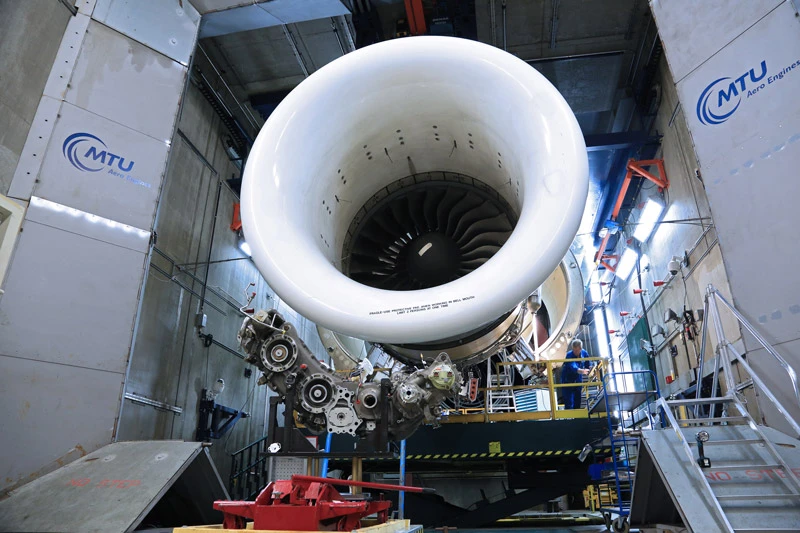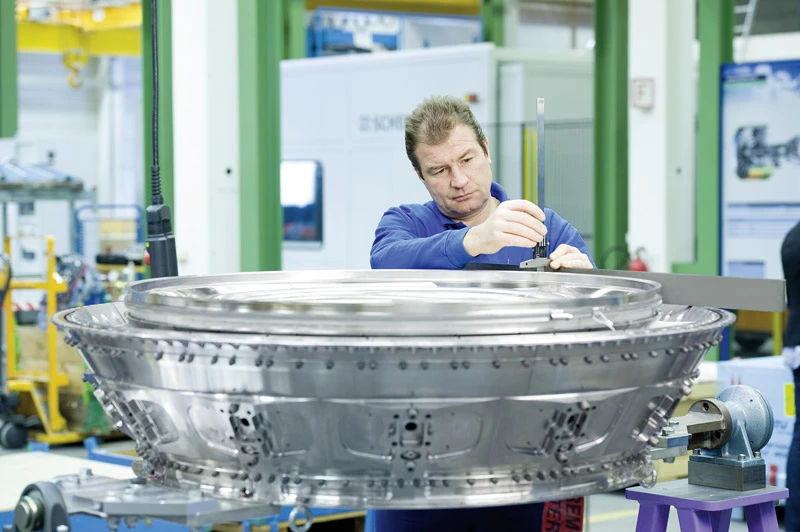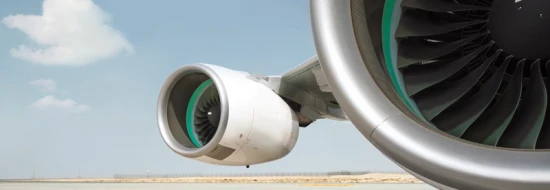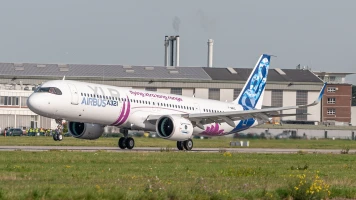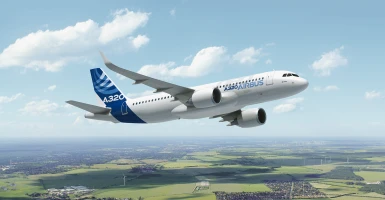aviation
Final call for a colossus. The last Airbus A380 has left the factory.
It set new standards and still delights passengers around the globe. Now, the final Airbus A380—the world’s largest commercial aircraft—has been completed and delivered.
author: Andreas Spaeth | 7 mins reading time published on: 09.02.2022
author:
Andreas Spaeth
has been traveling the world as a freelance aviation journalist for over 25 years, visiting and writing about airlines and airports. He is frequently invited to appear on radio and TV programs to discuss current events in the sector.
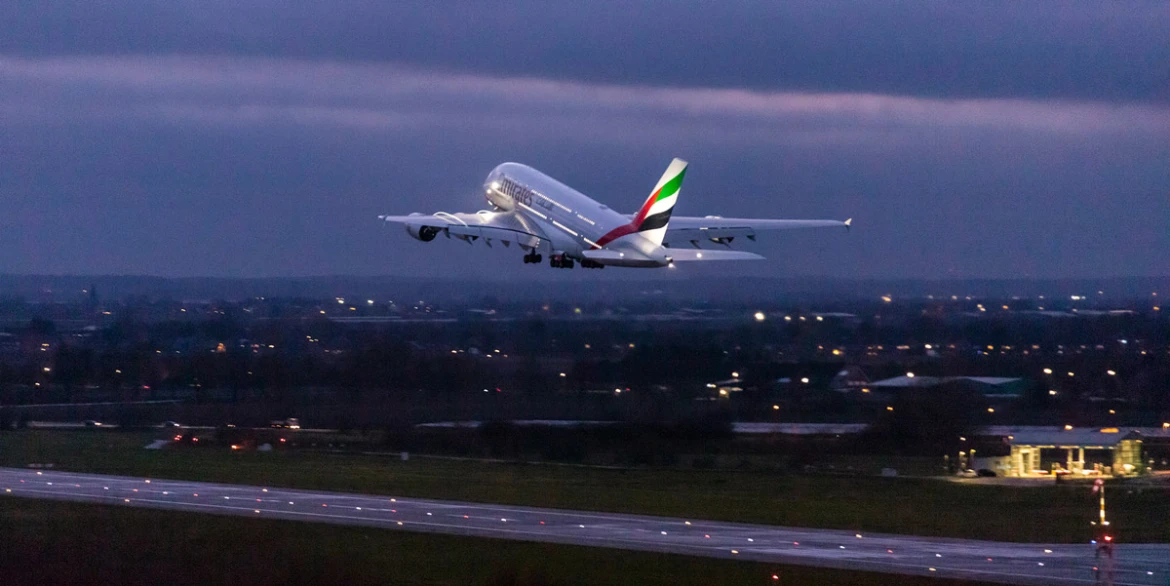
©Airbus

On a clear afternoon in December 2021, onlookers gathered on the viewing area next to the runway at the Airbus plant in Hamburg-Finkenwerder. There, on the banks of the Elbe, they happily waited for hours to watch the 251st and final A380 take off. Airbus supplied the first A380, the world’s largest commercial aircraft, to Singapore Airlines back in 2007. Now the last one was being delivered to Emirates, bringing the airline’s total to 123 and cementing its place as by far the largest customer. The moon had already risen in the winter sky when, at 16:41, this last ever A380 took off on its delivery flight to Dubai. Much to the disappointment of all involved, this farewell took place without any guests of honor or festivities—the pandemic made this impossible. Fourteen years after the first one was delivered, production of this flying double-decker has drawn to a close.
It’s actually because of the A380 that the runway in Finkenwerder was extended to where the planespotters and Airbus employees were standing. The program forever changed the face of that part of the city; at the beginning of the new millennium, an entire bay of the Elbe was reclaimed to provide land on which to erect the new A380 production building. And it wasn’t just in Hamburg that the superjumbo left its mark but also in Toulouse and elsewhere; the logistics of having A380 production distributed across Europe were extremely complicated. This included operating several fleets of sea and river vessels as well as Beluga XL transport aircraft to move segments of the A380 from location to location.
Finally a counterpoint to Boeing’s monopoly
As the new millennium dawned, Airbus wanted to finally have an aircraft to rival the Boeing 747. In commercial service since 1970, this legendary jumbo jet was scheduled to be taken out of production in 2022. Even though sales of the 747 were stagnating, Airbus decided to commit to building a superjumbo in the hope of finally disrupting Boeing’s lucrative monopoly. Airbus predicted that there would be considerable demand for an aircraft that could service the world’s major hubs and potentially accommodate up to 853 passengers on two decks. After substantial delays, the A380 entered commercial service in 2008, but things were soon to take a completely different turn. In 2011, Boeing launched its 787 Dreamliner—much smaller, much more efficient, and an economically viable way of serving nonstop long-haul routes out of secondary airports. Airbus countered with the A350. Suddenly, people could depart from, say, Düsseldorf and fly directly to destinations like Tokyo or Hong Kong.
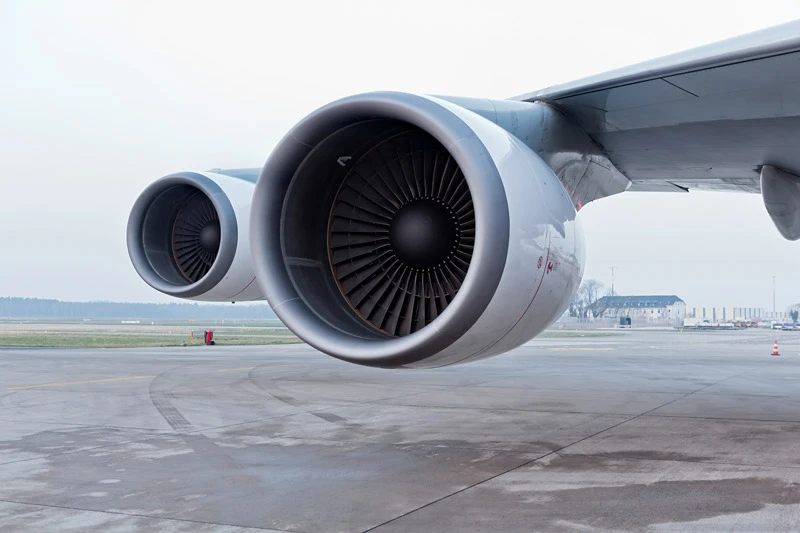
Boeing’s monopoly: Since they first entered commercial service in 1971, CF6 engines for the Boeing 747 have completed almost 430 million flight hours.

New strategy: Boeing’s much smaller and more efficient 787 Dreamliner began serving secondary airports on nonstop services back in 2011.
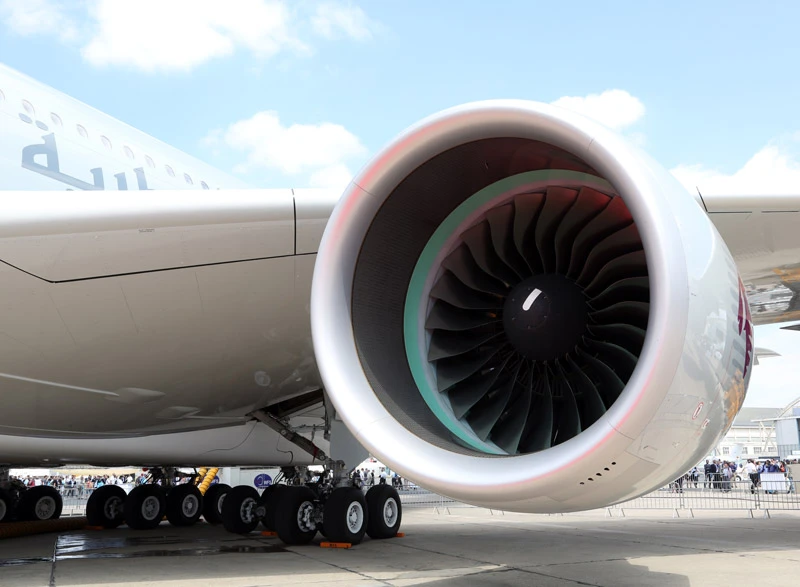
Plenty of thrust for superjumbos: The Engine Alliance’s GP7000 engine is one of two variants for the Airbus A380.
Passengers were no longer keen to change at the busy hubs, and serving direct connections with these new twinjets proved to be a good business for the airlines. Larger, heavier and powered by four engines, the A380 was left out in the cold. For one of the A380’s engine options, the GP7000, MTU Aero Engines is responsible for developing, manufacturing and assembling the entire low-pressure turbine and the turbine center frame as well as manufacturing high-pressure turbine components. Most A380 customers had trouble filling their aircraft, each with more than 500 seats, which made them expensive to operate. Only for a full-service carrier like Emirates, with its mega hub in Dubai, did the A380 prove to be the perfect aircraft.
An unexpected rise in late fall
But in fall 2021, the number of people traveling rose so sharply that several airlines pressed their A380 fleets back into service as the ideal solution to an urgent problem. An unexpected rise for the superjumbo in late fall. “But as soon as business travel picks up again, there will be renewed demand for more frequent flights, which in many cases will see a daily A380 flight exchanged for multiple flights performed by more efficient twinjets,” says Marko Niffka, Director Business Development – MRO at MTU.
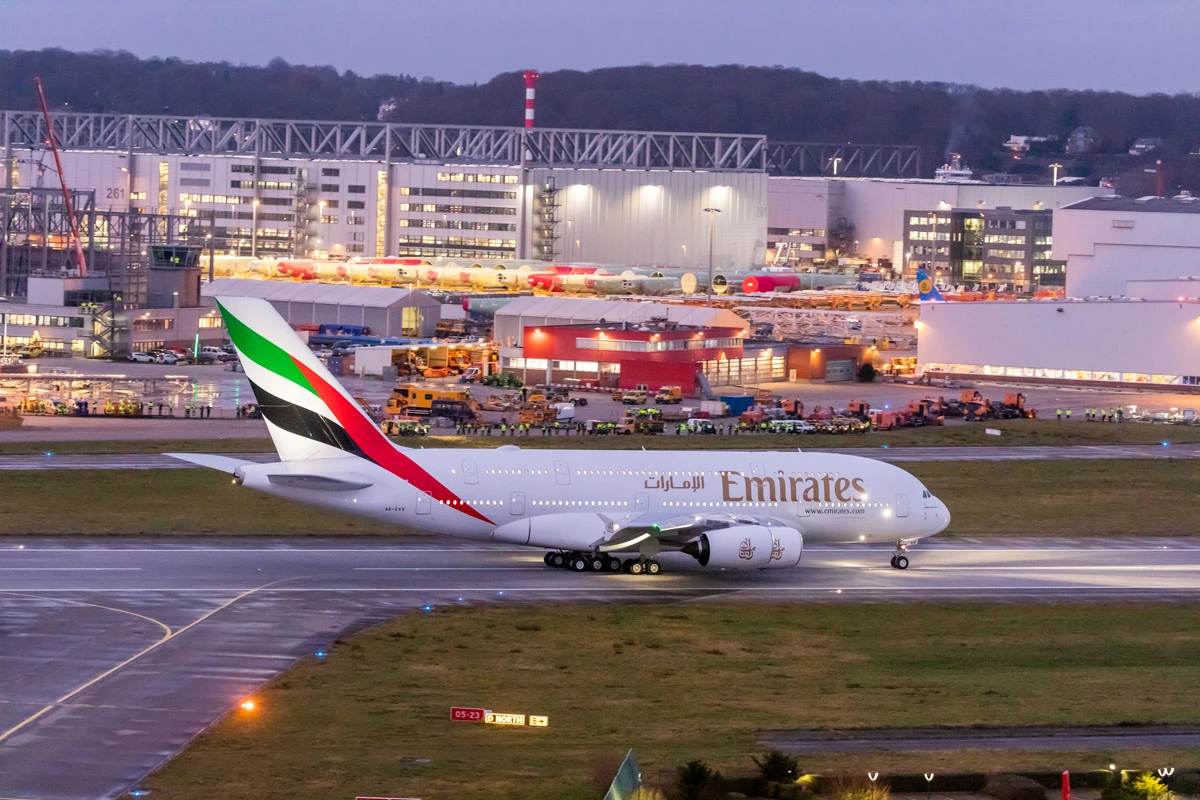
©Airbus
End of an era: In December 2021, the final superjumbo took off for Dubai—Emirates’ A380 fleet will be flying for many years to come.
Smaller aircraft exerting competitive pressure on larger ones
MTU experts predict that the market segment for large commercial aircraft will diminish in the future. “This is because they now face competition in the form of narrowbodies like the Airbus A321XLR, which can also serve long-haul routes,” says Marko Niffka, Director Business Development – MRO at MTU Aero Engines. MTU is excellently placed in this segment, in particular thanks to its involvement in geared turbofan engines such as the PW1100G-JM for the A321XLR. “Narrowbodies suitable for long-haul routes reinforce the trend toward fragmentation of the market,” Niffka explains. He expects that this will put yet more pressure on the major hub airports, which have up to now also represented a potential market for the A380. MTU experts believe that even though the market for large aircraft will continue to shrink, the segment will hold its own at the top end of that market. “These large jets—and the Boeing 777-9 will be one of them—are especially important to busy airports, which have hardly any takeoff and landing slots available. This area will sustain the market for large aircraft,” Niffka says.
At the same time, passengers’ love affair with the A380 endures to this day, with many willing to take a detour if that means flying on one. This is largely due to the extremely quiet cabin and—depending on cabin class and equipment—the generous amount of space on board. On the occasion of the final aircraft’s delivery, Airbus CEO Guillaume Faury said: “The A380 has touched the lives of so many passengers by taking the experience of flying and traveling to a whole new level. I am sure that this will continue to be the case, at least with Emirates, for decades to come.” Emirates plans for its still young A380 fleet to be flying at least in and out of Dubai until the mid-2030s.
A final bow
The A380 encountered its fair share of obstacles. One of the major problems were the years of delays in developing and manufacturing the A380, which sadly revealed that the Airbus factories in Germany and France weren’t working with compatible computer systems. When the A380 did finally enter service in 2008, this proved to be extremely bad timing: the SARS outbreak and the financial crisis that followed meant that demand for large aircraft plummeted. However, and on this point aircraft manufacturers and industry experts agree, the learning effects of the A380 were immense. Airbus was forced to consolidate and for the first time act and present itself as a unified company.
As the final A380 left the Finkenwerder plant, the mood among the onlookers was a mixture of melancholy and defiant enthusiasm. “So honored to bring her home,” Captain Dwayne Walker posted on social media prior to takeoff. At dusk, he took the last A380 up to begin the journey to Dubai, turned the aircraft and completed a “go-around”; with headlights on full beam, Walker performed a spectacular near-landing in front of the illuminated factory building. It almost looked like the superjumbo was taking its final bow at one of its birthplaces.
The GP7000 for the A380
Aviation history allows itself the occasional ironic twist. One of these is that the company that Airbus and all A380 customers actually have to thank for the very existence of the GP7000—one of the two engine variants for the world’s largest commercial aircraft—is Boeing. Back in the mid-1990s, Boeing staged the first of many attempts based on the 747-400 to bring a commercial aircraft with even greater capacity to market. The only problem was that none of the three major engine manufacturers offered a powerplant that would be suitable for the planned suberjumbos—the 747-500X and 747-600X—nor were particularly interested in developing such an engine.
So as 1995 moved into 1996, GE Aviation, Pratt & Whitney and Boeing began talks about a possible joint venture between the two U.S.-based engine manufacturers with the aim of developing at least one suitable new engine. In May 1996, the collaboration agreement for the Engine Alliance was signed, immediately followed by the start of work on a new engine with the designation GP7000.
Even though the 747-500X/600X endeavor was soon shelved, the money invested wasn’t wasted. In May 1998, a memorandum of understanding established that the Energy Alliance would develop the GP7000 for what would become the world’s largest commercial aircraft, which at that point had the designation A3XX.
A milestone for MTU
The GP7000 brought two worlds together: GE was responsible for the high-pressure turbine and high-pressure compressor, which borrowed significantly from the those of the GE90 that powered the 777, but with certain components adjusted for the lower thrust requirements of the A380. Pratt & Whitney followed suit, capitalizing on its own product for the 777, the PW4000, for the low-pressure turbine and low-pressure compressor.
However, even though the Engine Alliance is a joint venture between GE and Pratt & Whitney, this doesn’t mean that those two companies manufacture the entire engine themselves. On the contrary: MTU Aero Engines secured most of the remaining program share. Germany’s leading engine manufacturer has a 22.5 percent stake in the GP7000 and is responsible for developing, manufacturing and assembling the entire low-pressure turbine and the turbine center frame as well as manufacturing the blades and disks for the high-pressure turbine. In addition, maintenance of the low-pressure turbine takes place at MTU in Munich.
The GP7000 program is yet another milestone in MTU history. It gave the Munich team a foothold in the next generation of widebody engines: the contract to develop and manufacture the turbine center frame for the GP7000 was followed by corresponding work on the GEnx (787, 747-8) and the GE9X (777-8X and 777-9X). Last but not least, MTU Maintenance benefited from contracts and gained valuable expertise from maintaining widebody engines.

©Airbus




